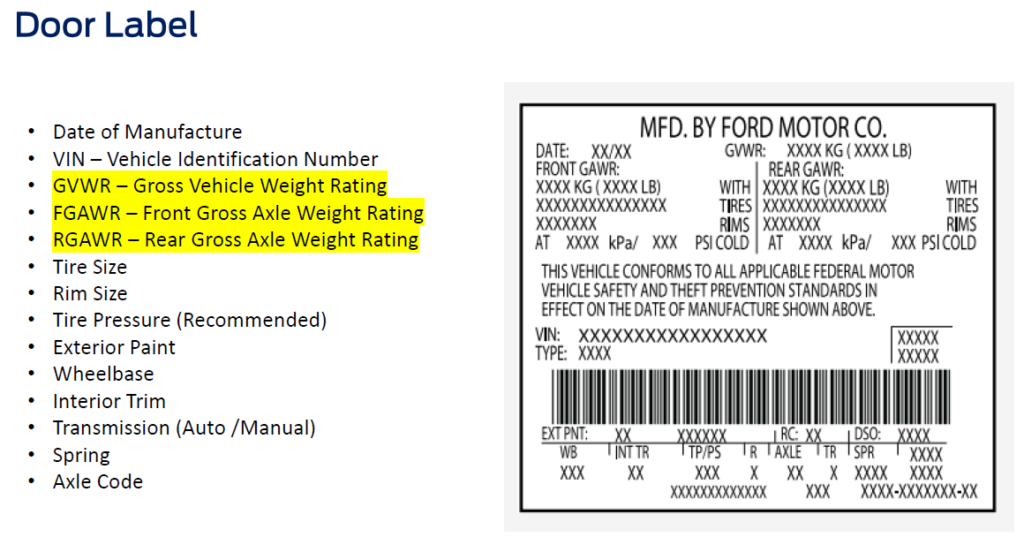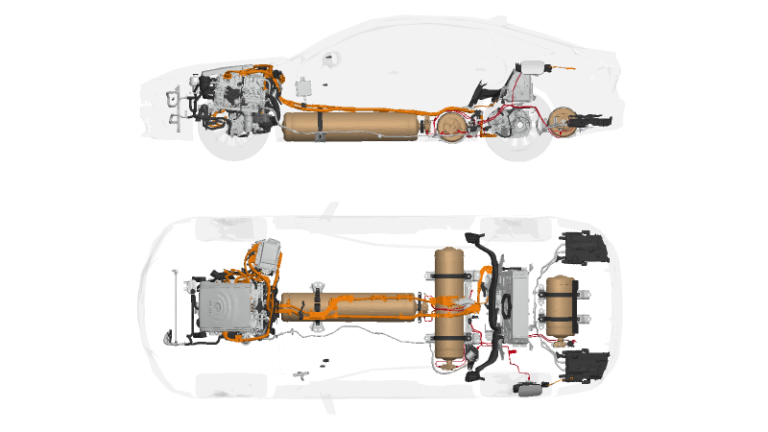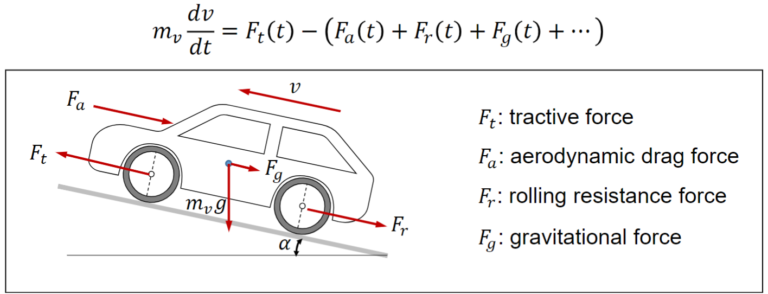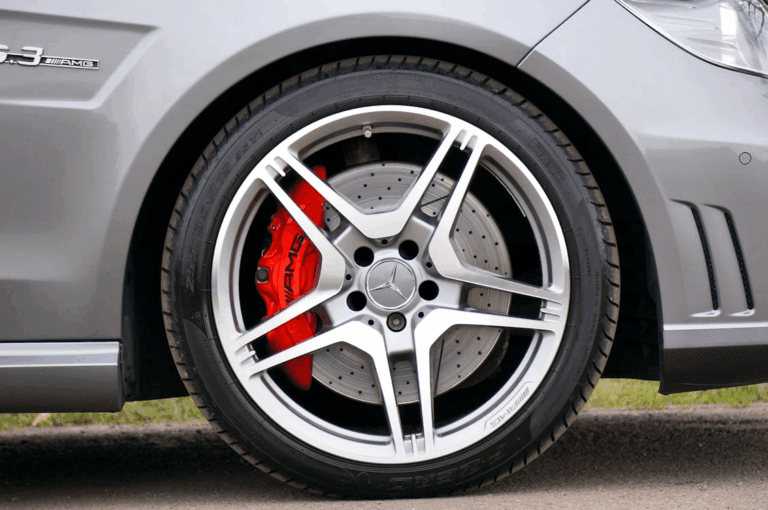The Engineering Behind Towing
Towing might seem simple at first glance, but behind every smooth ride with a trailer attached is some impressive engineering at play. Whether you’re hauling a boat to the lake, pulling an RV on a road trip, or towing a heavy-duty work trailer, understanding the mechanics and science behind towing is essential for safety and efficiency. So, let’s dive into the engineering behind towing and explore the factors that ensure you’re towing like a pro!

Key Towing Terms You Need to Know
The world of towing comes with its own language, but don’t worry – here’s a breakdown of the essential terms:
- GVWR (Gross Vehicle Weight Rating): The maximum weight a vehicle can safely carry, including passengers, fuel, cargo, and the tongue weight of the trailer.
- GAWR (Gross Axle Weight Rating): The maximum amount of weight one axle can support. This value often differs between front and rear axles.
- GTW (Gross Trailer Weight): The total weight of the trailer and its cargo. It’s crucial not to exceed your vehicle’s towing capacity with the GTW.
- Tongue Weight: The downward force exerted on the hitch by the trailer. This is a critical factor because too much or too little tongue weight can lead to dangerous trailer sway.
- Braked vs. Unbraked Towing Capacity: Some trailers come with their own brakes, which allow for a higher towing capacity. Unbraked trailers put more strain on your vehicle, lowering the maximum safe weight you can tow.
What Is Towing Capacity?
Towing capacity is the maximum weight your vehicle can safely tow. It’s more than just a random number – it’s the result of careful engineering that considers everything from the strength/ cooling capacity of your vehicle’s propulsion system, suspension, and body-in-white to how much weight the vehicle itself can handle. While manufacturers provide a single towing capacity figure, calculating the exact amount you can tow safely depends on several factors.

To find out your vehicle’s towing capacity, you first need to understand GCWR (Gross Combined Weight Rating), which is the maximum allowable weight of both your tow vehicle and the trailer combined. You’ll also need to know your vehicle’s curb weight, which is the weight of the car itself when filled with gas and other necessary fluids. By subtracting the curb weight from the GCWR, you’ll arrive at your vehicle’s towing capacity. It’s essential to keep a safety margin in mind—experts recommend staying at least 10% below the maximum towing capacity to account for shifting loads, sudden stops, or unexpected conditions.
Standardizing Tow Ratings with SAE J2807
For years, trailer tow ratings varied significantly across manufacturers, leading to confusion among buyers trying to compare towing capacities. To address this, in 2008 the Society of Automotive Engineers (SAE) developed the J2807 standard, a comprehensive set of recommended testing practices. This new standard establishes a rigorous and uniform method for determining a vehicle’s Gross Combined Weight Rating (GCWR), which is then used to calculate a reliable maximum trailer weight rating. By implementing J2807, manufacturers provide customers with a standardized way to compare trucks from different brands, ensuring transparency and consistency in tow ratings.
Rigorous Testing for Real-World Performance
The SAE J2807 test procedures assess a truck’s real-world towing performance through a variety of demanding evaluations. These include launch tests on steep inclines, flat-out acceleration benchmarks, and challenging highway gradeability assessments. Vehicles are tested under extreme conditions, such as steep 12-percent grades, high temperatures, and full-throttle acceleration scenarios, ensuring they can perform reliably under heavy loads. Additionally, trucks must maintain stability, prevent trailer sway, and demonstrate effective braking performance while towing at maximum capacity, eliminating any manufacturer loopholes that could lead to misleading ratings.
Ensuring Safety and Reliability in Towing
Beyond performance testing, J2807 includes critical safety evaluations such as braking distance requirements, parking brake effectiveness, and understeer measurements to ensure trucks remain stable and secure while towing.
The final Tow Weight Rating (TWR) is determined by subtracting the Tow Vehicle Total Weight (TVTW) from the GCWR, providing a clear and consistent measurement. With all major manufacturers adopting the J2807 standard, buyers can now confidently compare trucks, knowing they meet the same stringent requirements. This landmark testing process has set a new industry benchmark, prioritizing safety, reliability, and fairness in trailer tow ratings.
What is understeer, and how does it affect a vehicle towing a trailer under load?
Understeer is an unfavorable handling characteristic where a vehicle does not turn as sharply as intended while navigating a corner with a trailer under specific load conditions.
Metric: Understeer for lateral acceleration between 0.1 g and 0.3 g.

Does GVWR mean towing capacity?
No, GVWR does not mean towing capacity.
GVWR, or Gross Vehicle Weight Rating, is the maximum total weight of a vehicle as specified by the manufacturer, including the weight of the vehicle itself, passengers, cargo, and fuel. While GVWR does influence a vehicle’s towing capacity, it represents the maximum weight the vehicle can safely carry, not tow.
To calculate a vehicle’s maximum towing capacity, the Gross Combined Weight Rating (GCWR) is more relevant. Towing capacity can be estimated by subtracting the vehicle’s curb weight from its GCWR, which includes the combined weight of the vehicle and a loaded trailer.
What is the GVWR class of a vehicle?
The GVWR class of a vehicle is a classification based on the vehicle’s Gross Vehicle Weight Rating (GVWR), which is the maximum safe operating weight of the vehicle when fully loaded, as determined by the manufacturer. This rating is typically found on the Safety Compliance Certification Label on the driver’s side door or door latch post pillar.

Knowing your vehicle’s GVWR is important because it defines the total weight your vehicle can safely carry, including passengers, cargo, fuel, and trailer tongue weight. Exceeding this rating can lead to penalties, criminal charges, and severe damage to the vehicle. GVWR classes are commonly used for regulatory, safety, and insurance purposes, grouping vehicles by their weight capabilities into classes.
| Vehicle Class | GVWR Range (lbs) | Duty Type |
|---|---|---|
| Class 1 | 0–6,000 | Light-duty |
| Class 2a | 6,001–8,500 | Light-duty |
| Class 2b | 8,501–10,000 | Light/Medium-duty |
| Class 3 | 10,001–14,000 | Medium-duty |
| Class 4 | 14,001–16,000 | Medium-duty |
| Class 5 | 16,001–19,500 | Medium-duty |
| Class 6 | 19,501–26,000 | Medium-duty |
| Class 7 | 26,001–33,000 | Heavy-duty |
| Class 8 | >33,000 | Heavy-duty |
Calculating your towing capacity:
The maximum trailer weight rating is determined following the guidelines established by SAE J2807. To check that the weight of the vehicle and trailer are within the GCWR for the vehicle, follow these steps:
- Start with the “curb weight.”
- Add the weight of the trailer loaded with cargo and ready for the trip.
- Add the weight of all passengers.
- Add the weight of all cargo in the vehicle.
- Add the weight of hitch hardware such as a draw bar, ball, load equalizer bars, or sway bars.
- Add the weight of any accessories or aftermarket equipment added to the vehicle (accessory floor mats, tonneau covers, bed mats) .
The resulting weight cannot exceed the GCWR value.
The GCWR can also be confirmed by weighing the truck and trailer on a public scale. The truck and trailer should be loaded for the trip with passengers and cargo.

Rear Gross Axle Weight Rating (GAWR-RR)
The GAWR-RR represents the maximum weight the vehicle’s rear axle can safely carry. Make sure not to exceed this rating when the vehicle and trailer are fully loaded, including the trailer tongue weight. If you’re using a weight-distributing hitch, ensure the GAWR-RR is not surpassed before engaging the weight distribution spring bars.

What Causes Trailer Sway?
One of the most nerve-wracking experiences while towing is trailer sway, which occurs when the trailer begins to move side to side uncontrollably. Trailer sway can be caused by various factors including improper weight distribution, high-speed driving, strong crosswinds, or even an overinflated or underinflated tire.
To prevent trailer sway, engineers have developed tools like weight-distributing hitches and sway control devices. A weight-distributing hitch helps stabilize the trailer by ensuring that the load is evenly spread across both the trailer and the towing vehicle, reducing the likelihood of swaying. Meanwhile, sway control devices stiffen the connection between the trailer and the vehicle, giving you more control when swaying occurs.
How is trailer sway response measured and analyzed under specific conditions?
A standardized method for evaluating and assessing a trailer’s sway response when connected to a specific vehicle under defined loading and operating conditions.
Metric: 0.10 at 100 km/h.

How to Control Trailer Sway
If your trailer begins to sway despite your best efforts, it’s important to remain calm and follow these steps:
- Take your foot off the gas to slow down.
- Avoid braking, as it could make the sway worse.
- Keep a firm grip on the steering wheel and avoid steering abruptly.
- Let the trailer stabilize itself before resuming normal driving.
Hitch Classes and Why They Matter
Another critical aspect of towing is ensuring you’re using the right hitch for your setup. Trailer hitches are divided into classes based on their weight capacity:
- Class I: Pulls up to 2,000 pounds and is typically used for small vehicles like cars and crossovers.
- Class II: Handles up to 3,500 pounds, ideal for minivans and large cars.
- Class III: Supports up to 5,000 pounds, often found on midsize SUVs and trucks.
- Class IV: Pulls up to 10,000 pounds, used for larger trucks and SUVs.
- Class V: Handles up to 20,000 pounds, for heavy-duty towing with full-size trucks.
The hitch class you choose must match your vehicle’s towing capacity and the weight of the trailer you’re towing. Using the wrong hitch can lead to unstable towing conditions and dangerous swaying.
The Science Behind Towing Safely
The reason weight distribution matters so much comes down to simple physics. Too much weight on the back of the trailer can cause the trailer to lift the front of your tow vehicle, reducing its grip on the road and causing dangerous handling. Conversely, too much weight at the front can put excess stress on the hitch, reducing your vehicle’s ability to steer and brake properly.
Experts recommend loading about 60% of the trailer’s weight toward the front and ensuring it’s evenly distributed from side to side. Securing the load properly with straps or tie-downs is also essential. Even small shifts in cargo can throw off the trailer’s balance and create unsafe driving conditions.
Advanced Tow Systems and Future Technologies
Many modern vehicles come equipped with electronic towing aids that help drivers maintain control. These include electronic sway control systems that automatically adjust the brakes when they detect trailer sway. Other advanced systems incorporate cameras and sensors to help with trailer alignment and parking.
As technology evolves, we’re seeing the development of more sophisticated towing systems, such as autonomous towing aids and predictive algorithms that adjust for changes in weather or road conditions. These innovations promise to make towing safer and more accessible, even for drivers with little experience.
Conclusion
Towing is far more than just hitching a trailer to the back of your vehicle and hitting the road. The engineering behind towing covers everything from the vehicle’s capacity to the physics of weight distribution and the technology designed to keep trailers stable on the highway. Understanding the science behind towing helps ensure that every trip is safe and smooth, whether you’re towing a lightweight trailer or a heavy-duty RV. So next time you’re towing, take a moment to appreciate the complexity and engineering that make it possible.







I genuinely enjoy looking through on this site, it has got excellent posts.